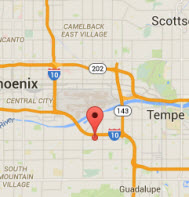Learn How To Screen Print With Catspit Productions, LLC
"Thin Mesh": Higher Mesh Counts & Lower Thread Diameters
An older way of thinking about screen printing tee shirts or other garments is to use lower mesh counts to achieve better coverage and color. While it is true that leaving more ink on a fabric will tend to make it more opaque, there are better, more efficient ways of getting the same or better results. You will have to abandon your desire to do simple spot color jobs on mesh counts like 110 or lower and adopt the use of newer mesh counts.
 In order to use the newest monofilament polyester screen fabrics to your advantage, you will need to understand a simple characteristic of screen printing mesh. We will be focusing on how a fabric's thread diameter affects the mesh geometry. That is to say, we will look at how the thread diameter of the mesh will affect the overall ink flow or increase the mesh opening for any given mesh count. If you need a refresher on mesh dialogue and nomenclature, please read this article: Screen Printing Mesh: Count Conversions, Nomenclatures & More. We will try not to get over technical here but there is a certain amount of tech talk needed in order to continue.
In order to use the newest monofilament polyester screen fabrics to your advantage, you will need to understand a simple characteristic of screen printing mesh. We will be focusing on how a fabric's thread diameter affects the mesh geometry. That is to say, we will look at how the thread diameter of the mesh will affect the overall ink flow or increase the mesh opening for any given mesh count. If you need a refresher on mesh dialogue and nomenclature, please read this article: Screen Printing Mesh: Count Conversions, Nomenclatures & More. We will try not to get over technical here but there is a certain amount of tech talk needed in order to continue.
Let's now consider a mesh count of 150, made with a 48 micron diameter thread and stretched at 28 N/cm. This screen will have a mesh opening ratio of around 51%. If we look at the two percentages, you will see the 110 has a 43% mesh opening and the 150 has a 51% mesh opening. So, even though the 150 mesh is a higher thread count in comparison to the 110, it still has more open area. This allows for greater ink saturation in the print area, improving the opacity and the color intensity of the print. Although this mesh may have a little bit lower theoretical ink volume, it will have better ink flow characteristics and allow a reduction in squeegee pressure too. This will produce a thinner, more even and smooth ink deposit which creates a softer hand or feel to the print. Mesh like this is sometimes referred to as "thin mesh".
This type of mesh can have great advantages for many reasons. Reducing squeegee pressure can increase image detail. It can also reduce stencil drag which in turn improves registration. Also, it is important to note that ink opacity or coverage is affected by factors other than ink volume such as the substrate and even the ink quality itself. In standard conditions, a smooth, even deposit of a lesser amount of ink will produce a more colorful and opaque print than applying thicker layers of ink.
Using a mesh like the aforementioned 150/48 or maybe a 135/40 for a white under base is an excellent usage of this type of mesh. The under base will be able to render details needed for the design and it will produce a better surface than would be produced by the 110/80 mesh. As you may already know, a smoother, thinner, more consistent under base is ideal for halftones. A thin mesh could also help reduce clogging with water based inks and back flooding.
Some advantages of "thin mesh":
- Better ink flow with less effort
- Great coverage with minimal ink volume
- Creates a smoother, more consistent surface
- Requires less squeegee pressure
- Improves print quality or detail
- Easier to achieve stencil detail
- Elimination of fabric interference in halftones
- Creates a softer hand print
You should be able to learn more about the advantages of thin mesh from your fabric vendor if they are a reputable, "state of the art" screen printing source. With a little research and some testing, you could be taking advantage mesh technology and improve print quality while making production easier.


 Screenprinting Equipment From Catspit Productions
Screenprinting Equipment From Catspit Productions


